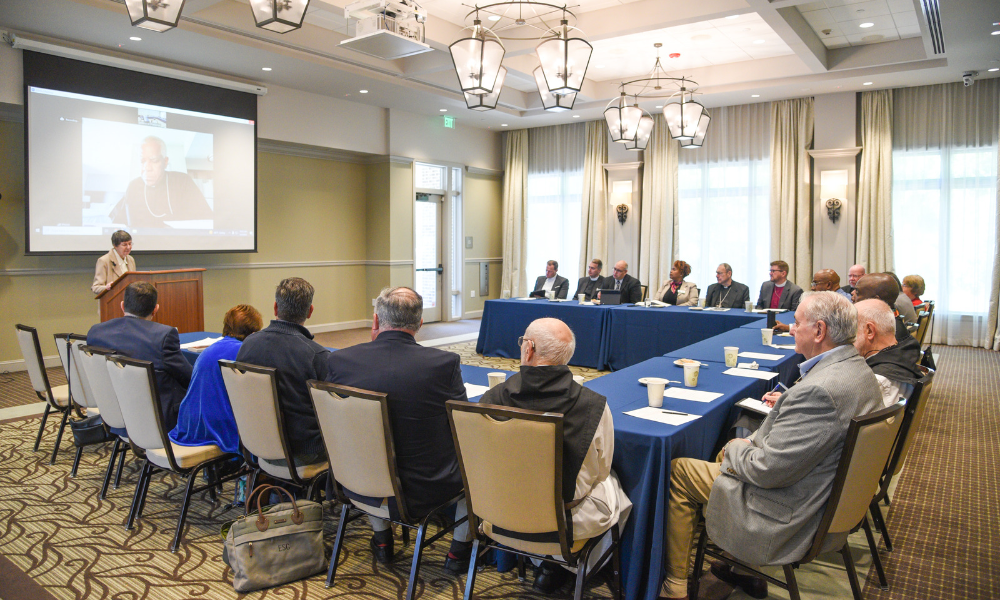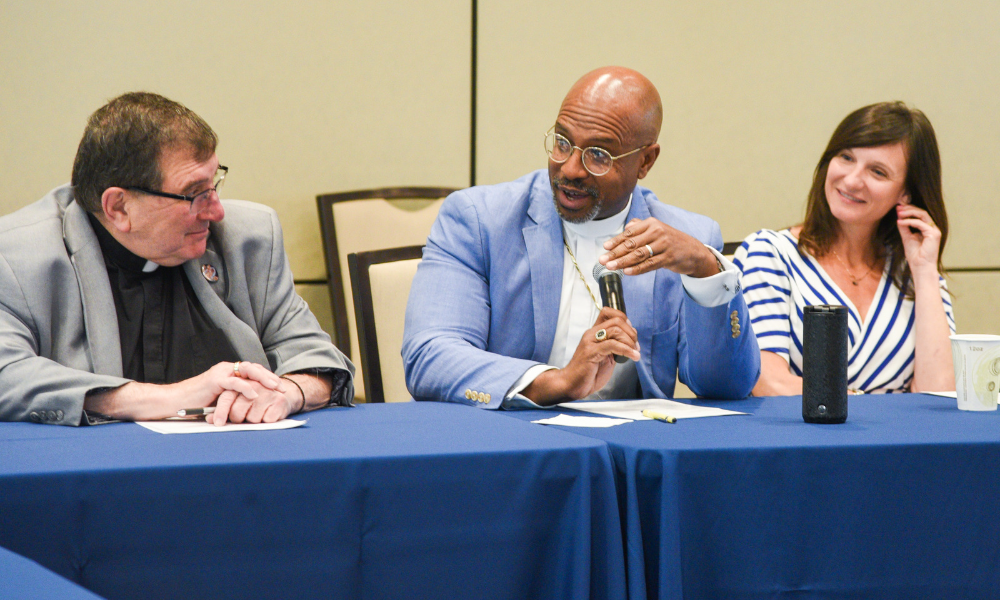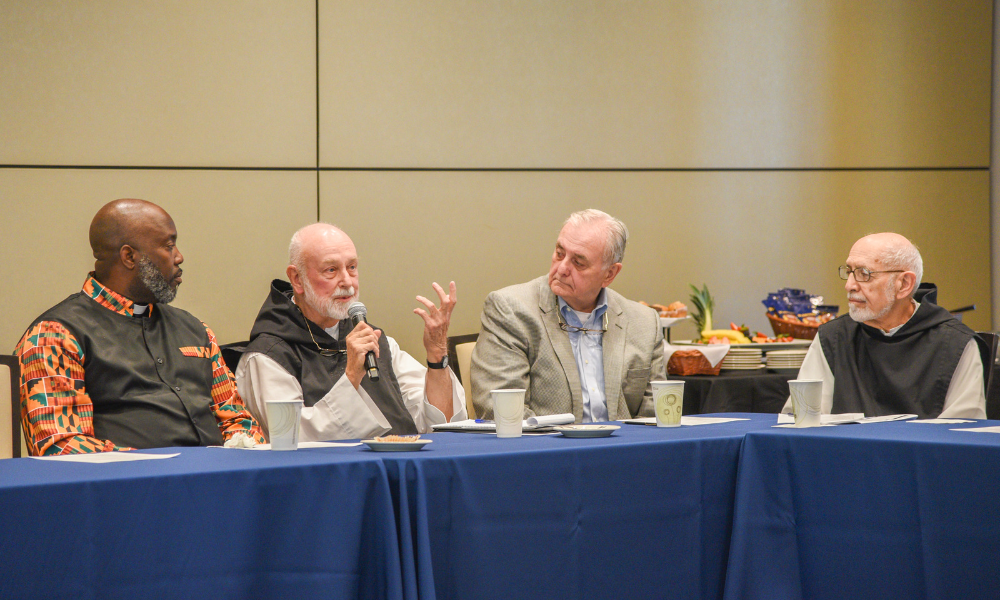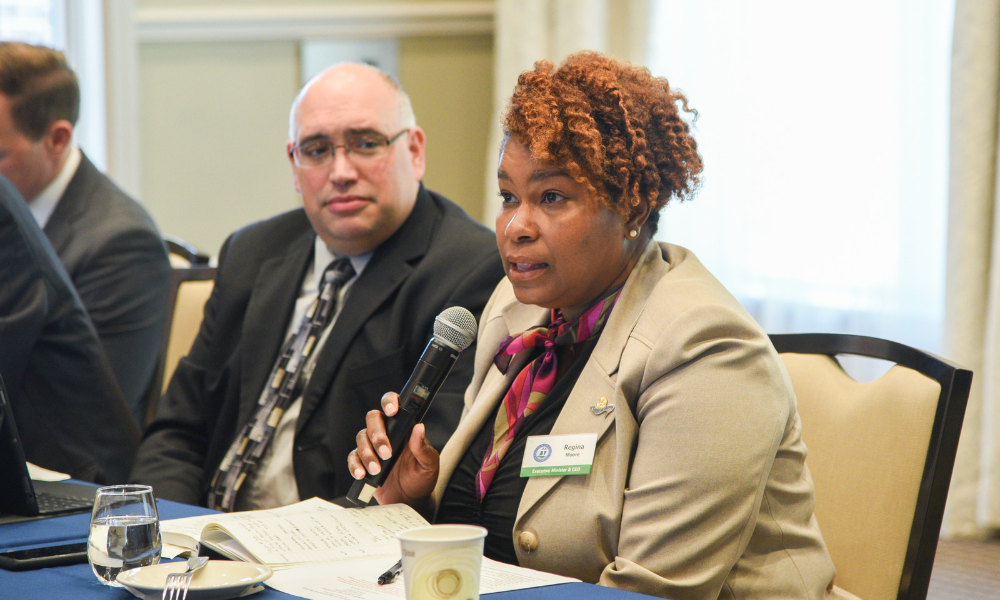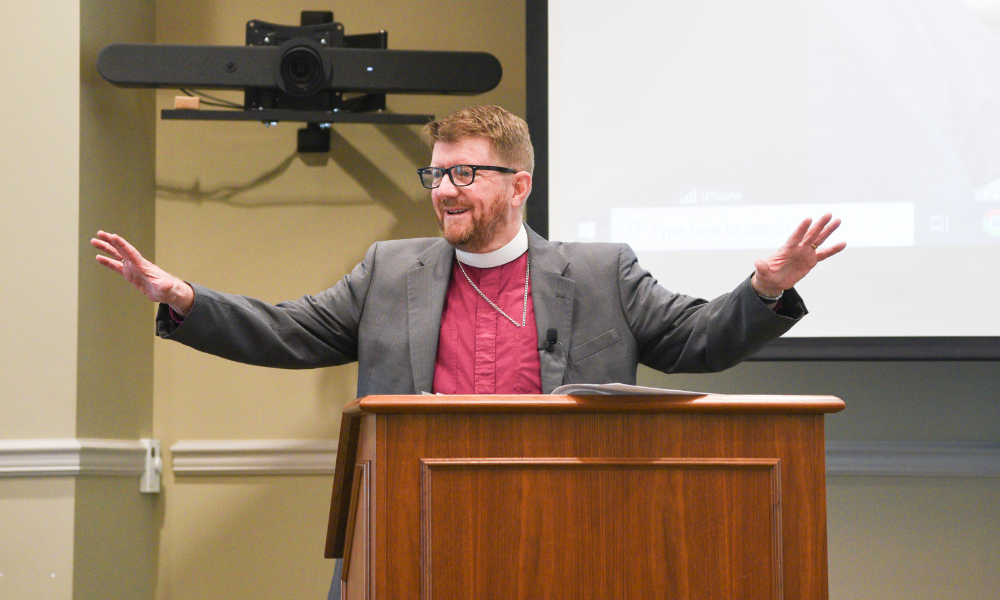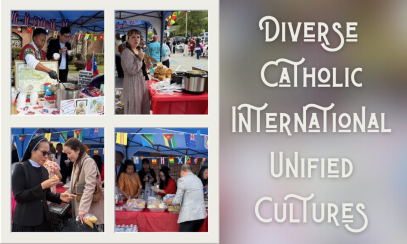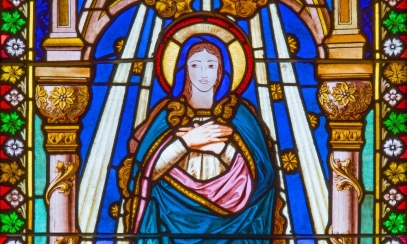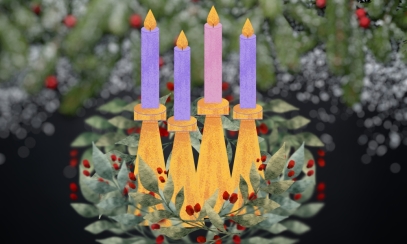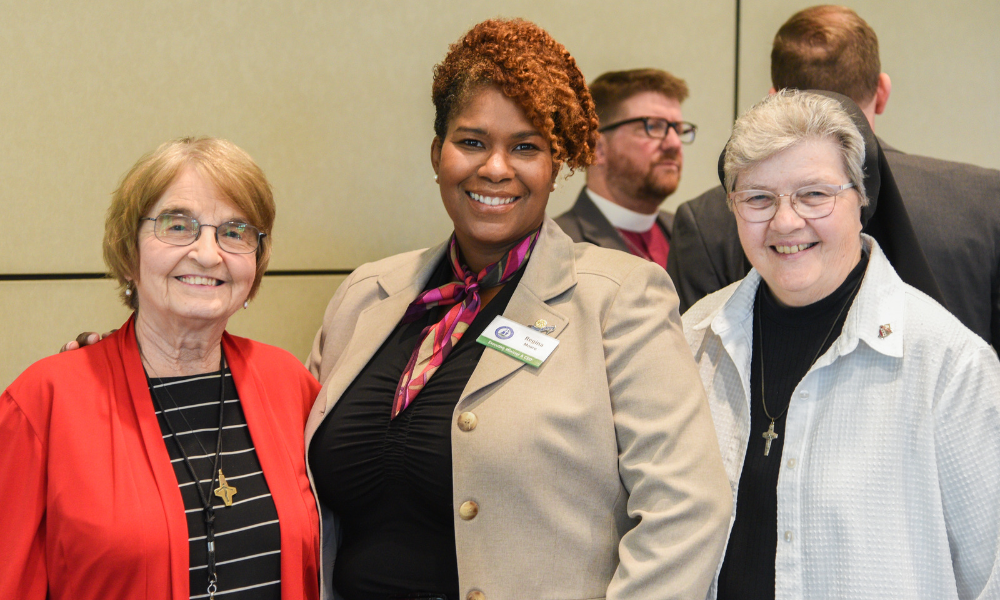
Receptive Ecumenism: Christians dialogue on Mary and things we share
Mary, the mother of our Savior, is hardly a hot topic or object of controversy among Catholics. However, some of the core beliefs about her are contested among various Christian denominations.
Mary, the mother of our Savior, is hardly a hot topic or object of controversy among Catholics. However, some of the core beliefs about her are contested among various Christian denominations.
A very promising step toward mutual understanding took place on May 3 for an ecumenical conversation on the Blessed Virgin, discussed among clergy and faith leaders from Catholic, Anglican, Reformed Episcopal, United Methodist, African Methodist Episcopal, Greek Orthodox and Lutheran churches. Bishop Jacques Fabre-Jeune, CS, joined by videoconference, and Bishop emeritus Robert E. Guglielmone was present.
The springboard for the event was discussion of a text called “Mary: Grace and Hope in Christ” which was the fruit of an Anglican-Roman Catholic dialogue. This study, forged by an international group of clergy and scholars in 2005, submits that there are many agreements among Christians about the role of the mother of Jesus. We see her as the fulfillment of the prophecy of Isaiah that foretells the virgin birth of the Messiah. We agree that the early fifth century term Theotokos (God-bearer, and thus Mother of God) fits her because she is the mother of the Lord who is both true God and true man. We honor her in the annunciation, visitation and birth of the Messiah. We see her intervention at Cana, and her presence at the crucifixion and Pentecost, as significant. Along with eastern Orthodox Christians, Anglicans and Catholics hold that it is appropriate to pray to Mary and the saints for their intercession. Christians in general see her as an example of obedience to the call of God and can readily call her the first disciple of the Lord. Among things not held in common are two Catholic dogmas: the Immaculate Conception and the Assumption.
Sister Sara Butler, MSBT, Ph.D., traveled from Philadelphia to present at the event. A former member of the Vatican’s International Theological Commission and a consultant to the U.S. Conference of Catholic Bishops Committee on Doctrine, she was a major participant in crafting the Anglican-Roman Catholic statement. The respondent to her talk was Right Rev. Chip Edgar, bishop of the Anglican Diocese of South Carolina. He addressed Marian insights and ongoing issues raised in what has been called “the Seattle Statement.”
This document on Mary proposed that a way of reconciling some of the differences arising from the two Catholic dogmas might be to approach the beliefs via a framework found in St. Paul. Mary can be seen as typifying the people Israel and the people of the New Covenant in Christ. She has been predestined, called, justified, sanctified and glorified. There seems to be mutual understanding that the abundant graces provided by Christ’s suffering, death and resurrection can be seen as transcending time — in anticipation of the birth of the Messiah and in anticipation of the “glorified body” promised to all those saved.
The presentations and observations — including similarities and differences between the two faith traditions — prompted an open discussion among the 23 participants at the meeting. The Charleston area sees a number of cooperative efforts and seasonal celebrations among interfaith groups, and various Christian denominations join in outreach efforts across the state. This was exemplified by the presence of Rev. Dr. Regina Moore, executive minister of the South Carolina Christian Action Council, and Dena Fokas Moses, president of the Charleston Interreligious Council.
It has been a long time since the area, or the state, has seen organized dialogues on deeper matters of faith. The mode used for the May 3 event has been termed "receptive ecumenism." The participants listened respectfully to the explanations of one another’s beliefs to learn from one another without proselytizing or arguing — and to note areas of agreement.
The consensus of the group was that such discussions, on a variety of topics, should go forward and may be rotated among hosting churches. Based on suggestions advanced by Rev. Eric Manning, pastor of Mother Emanuel A.M.E. Church in Charleston, and Rev. Tory Liferidge, pastor of Grace Reformed Episcopal Church in Moncks Corner, the likelihood is that the first topic to be taken up will be the problem of pain.
Rev. Manning said the image of the Pietà speaks to the deep grief of mothers, especially those whose children have died in acts of violence. It also prompts us to look more deeply at the whole Christian attitude toward the meaning of suffering, Rev. Liferidge observed. One needs look no farther than the daily news to see images of mothers holding slaughtered children in their arms — whether as victims of random or intentional shootings on American streets or in the streets of Sudan and Ukraine. A perennial question among Christians is how to make sense of suffering.
With a promising start in the month of May, the month of Mary, it looks as though there will be many occasions going forward for Christian leaders to gather and examine what we see similarly, what we see differently, what we can learn from one another, and what causes we can unite to advance.
Sister Pamela Smith, SSCM, Ph.D., is the diocesan director of Ecumenical and Interreligious Affairs. Email her at psmith@charlestondiocese.org.

